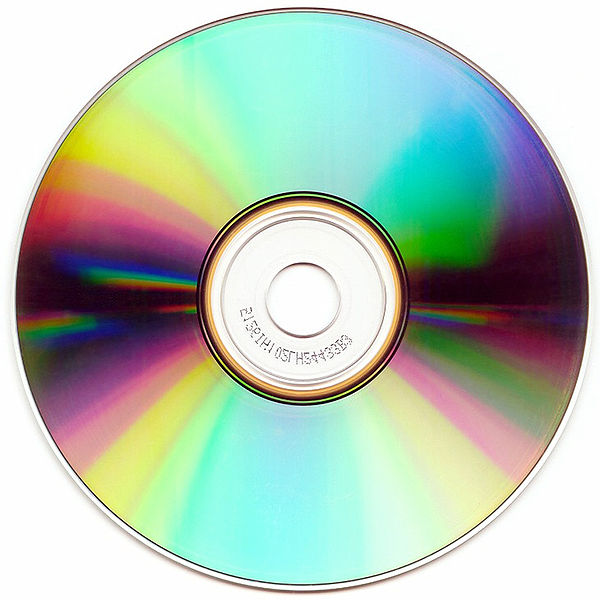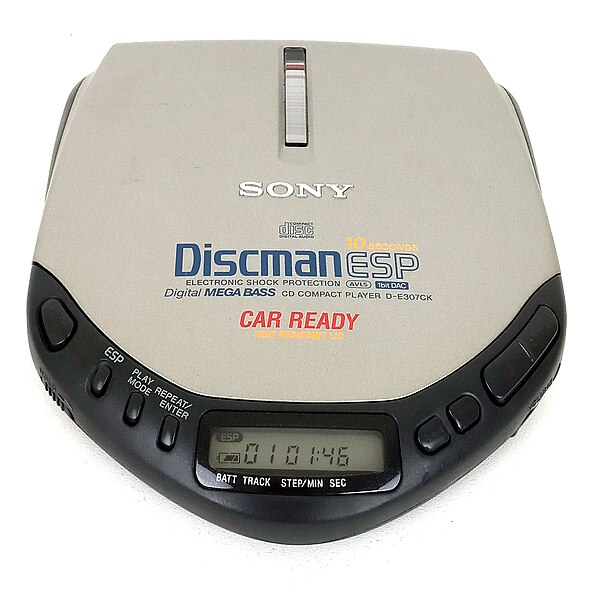A CD player is an electronic device that plays audio compact discs, which are a digital optical disc data storage format. CD players were first sold to consumers in 1982. CDs typically contain recordings of audio material such as music or audiobooks. CD players may be part of home stereo systems, car audio systems, personal computers, or portable CD players such as CD boomboxes. Most CD players produce an output signal via a headphone jack or RCA jacks. To use a CD player in a home stereo system, the user connects an RCA cable from the RCA jacks to a hi-fi and loudspeakers for listening to music. To listen to music using a CD player with a headphone output jack, the user plugs headphones or earphones into the headphone jack.
A portable CD player
Sony CDP-101 from 1982, the first commercially released CD player for consumers
Philips CD100 from 1983, the first commercially released CD player in the USA and Europe
This disc is highly corroded. The error correction cannot correct all errors. Two minutes can be played, however.
The compact disc (CD) is a digital optical disc data storage format that was co-developed by Philips and Sony to store and play digital audio recordings. It uses the Compact Disc Digital Audio format which typically provides 74 minutes of audio on a disc. In later years, the compact disc was adapted for non-audio computer data storage purposes as CD-ROM and its derivatives. First released in Japan in October 1982, the CD was the second optical disc technology to be invented, after the much larger LaserDisc (LD). By 2007, 200 billion CDs had been sold worldwide.
The readable surface of a compact disc includes a spiral track wound tightly enough to cause light to diffract into a full visible spectrum.
Dutch inventor and Philips chief engineer Kees Schouhamer Immink was part of the team that produced the standard compact disc in 1980
Sony Discman D-E307CK portable CD player with 1-bit DAC
Pits and Lands of a compact disc under a microscope








